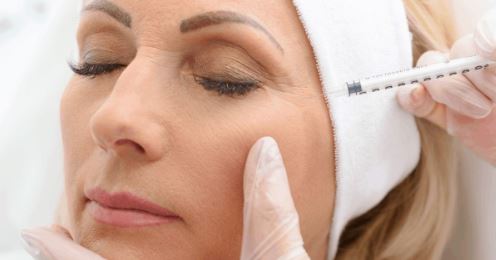What Are Botox Injections And What Is The Procedure For It? – Anju Methil
In this article, Dr. Anju Methil who is a top dermatologist in Andheri, Mumbai talks about “What are Botox Injections and when should you take them?”.
Dr. Anju Methil, M.D., D.D.V. is a dermatologist and cosmetologist based in Mumbai who specializes in cosmetic medicine. Dr. Anju is a female injector specializing in the treatment of lines and wrinkles as well as non-surgical face shaping with fillers.
Botox injections are most well-known for their ability to smooth out facial wrinkles. Additionally, they are used to treat neck spasms (cervical dystonia), excessive sweating (hyperhidrosis), an overactive bladder, and a lazy eye. Additionally, Botox injections may aid in the prevention of chronic migraines.
Botox injections temporarily paralyze a muscle with a toxin called onobotulinumtoxinA. The bacteria that causes botulism produces this toxin.
Botox was the first medication to incorporate botulinum toxin. Additionally, abobotulinumtoxinA (Dysport), rimabotulinumtoxinB (Myobloc), and incobotulinumtoxinA are now available (Xeomin). Each is slightly different, notably in terms of dose units, and thus cannot be used interchangeably.
Contents
Why is it done?
Andheri-based Dr. Anju Methil a leading Dermatologist says that Botox injections work by inhibiting specific chemical signals sent by neurons, most notably those that cause muscles to contract. These injections are most frequently used to temporarily relax the facial muscles that contribute to wrinkles on the forehead and around the eyes.
Additionally, Botox injections are used to treat diseases that impair the way the body functions. Several examples include the following:
Dystonia cervicalis
In this painful condition, the muscles in your neck tighten automatically, twisting or turning your head into an unpleasant posture.
Sluggish eye
The most frequent cause of lazy eye is an imbalance in the muscles that control eye posture.
Contractures of the muscles
Certain neurological diseases, such as cerebral palsy, might cause your limbs to draw in toward your central nervous system. Botox injections may be used to relax these constricted muscles in some circumstances.
Migraine attacks that are chronic
Botox injections may help lower headache frequency if you suffer from migraines more than 15 days per month.
Dysfunction of the bladder
Additionally, Botox injections can be used to treat urinary incontinence caused by an overactive bladder.
Twitching of the eyes
Botox injections may assist to alleviate muscular contracture or twitching around the eye.
Risks
When delivered by a trained physician, Botox injections are relatively safe.
Below are among the possible adverse effects and complications:
- At the injection site, there may be discomfort, edema, or bruising
- Suffering from a headache or flu-like symptoms
- Eyelids that droop or cockeyed brows
- A crooked smile or excessive drooling
- Dryness of the eyes or excessive weeping
Although highly improbable, it is possible for the injection’s toxin to travel throughout your body. Contact your doctor immediately if you have any of the following complications within hours to weeks of getting Botox:
- Muscle frailty
- Issues with vision
- Having difficulty speaking or swallowing
- Breathing difficulties
- Deficiency in bladder control
Botox is generally not recommended during pregnancy or breastfeeding. Additionally, Botox should be avoided in individuals who are allergic to cow’s milk protein notes Dr. Anju Methil a leading dermatologist in Andheri, Mumbai.
Choose your physician with caution
Botox should be used only under the supervision of a physician. It is vital that injections are placed correctly to avoid adverse consequences. Botox injections might be hazardous if not given properly. Consult your primary care physician for a referral or look for a specialist who specializes in your condition and has experience providing Botox injections.
A qualified and fully certified physician can advise you on the process and assist you in determining whether it is the best option for your needs and health.
How to prepare
Inform your doctor if you’ve recently received any type of Botox injection. Additionally, inform your physician if you are already taking muscle relaxants, sleeping aids, or allergy drugs. If you are on blood thinners, you may need to discontinue several days prior to your injection to minimize the risk of bleeding or bruising.
What to expect
Prior to the procedure
The majority of patients experience little discomfort during the operation. However, you may wish to numb your skin prior to the procedure, particularly if your palms or soles are being treated for excessive sweating. Your doctor may numb the area using one or more of the available treatments, including topical anesthetic, cold, or vibration anesthesia, which relies on massage to alleviate discomfort.
During the treatment
Botox injections are often administered at a physician’s office. Your doctor will inject very small doses of botulinum toxin into your skin or muscles using a fine needle. The number of injections required is dependent on a number of factors, one of which is the size of the area to be treated.
Following the procedure
For the next 24 hours, avoid rubbing or massaging the treated areas.. This may assist in preventing the poison from spreading to another location. You can resume your routine activities immediately following the surgery opines Dr. Anju Methil one of the best dermatologists in Andheri, Mumbai.
Results
Botox injections begin to function approximately one to three days following treatment. The effect may last three months or longer, depending on the nature of the problem being treated. To maintain the effect, you’ll need to receive follow-up injections on a regular basis.


